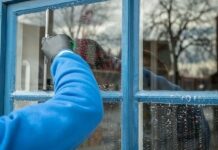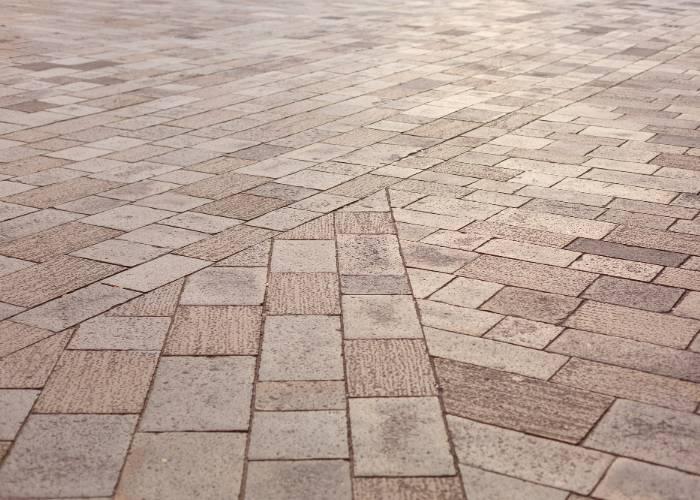
While stamped concrete contractors might find it challenging and undesirable to perform concrete pouring tasks in the cold weather of Kansas City, construction work shouldn’t stop just because temperatures drop.
As the temperature of the concrete keeps changing in reaction to changing weather conditions, the concrete has to go through varying curing conditions, thereby leading to rapid strength gain. To protect fresh concrete against these weather changes, the stamped concrete contractor must be prepared. The right equipment and materials will have to be available to prevent avoidable delays and unsafe concrete formation.
In this article, we answer the question of whether stamped concrete contractors can work during cold weather in Kansas City. For more information, please refer to our site at kansascitystampedconcretepros.com.
Does cold weather affect concrete curing?
There are two major problems that stamped concrete contractors have to deal with when pouring concrete in cold weather.
- This is a high possibility of the concrete freezing before it becomes strong. The problem with this is that it breaks up the matrix.
- The rate at which concrete gets set is slower in cold weather, especially when the temperature is below 50°F. At temperatures lower than 40°F, the hydration reaction stops, and the concrete doesn’t gain strength.
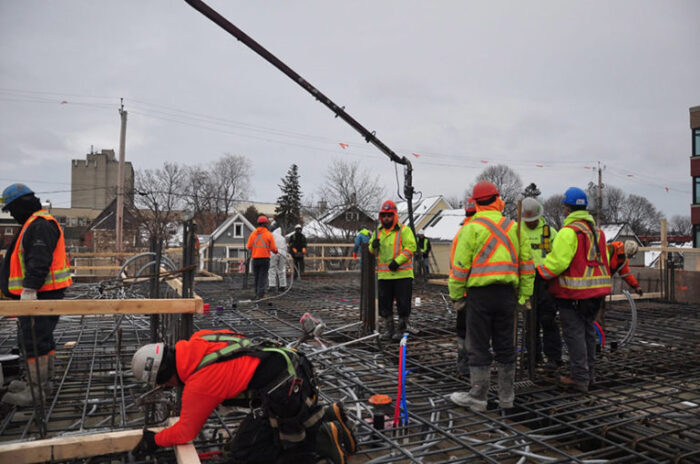
It is important to note that these temperatures are not air temperatures, but concrete temperatures. So, in cold weather, the concrete contractor has to keep the concrete protected until it can withstand the temperature on its own. As a rule of thumb, when the concrete achieves about 500 psi of strength, then it’s fine.
The crazy thing is that by the time the concrete gains a compressive strength of 500 psi, the hydration process of the cement would have used up enough of the water in the original mix. Even if the cement freezes at this point, the pores will not have sufficient water remaining in them to cause damage to the concrete. This process usually happens after 24 hours with most concrete, even at 50°F.
There are two things that can be done to help the concrete achieve the 500 psi strength in the Kansas cold weather: Alter the concrete mix in such a way that it will set faster, or shield the concrete from the cold weather. And sometimes, the two have to be done.
Fixing concrete mixing issues in cold weather
Many of the problems with cold weather can be dealt with by the stamped concrete contractor. Here are a few things to keep in mind:
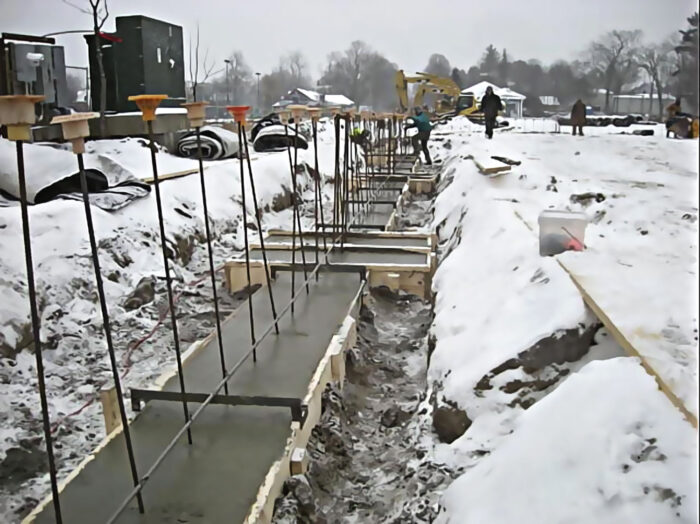
- The contractor will usually make use of hot water in the concrete during the cold weather. Most producers try to keep the concrete at a temperature no less than 65°F when it leaves the plant. This temperature is usually perfect, depending on the temperature of the air and how thick the element of the concrete is.
- The set time for concrete to cure can be delayed as a result of colder weather. However, the addition of accelerators to the concrete can help to keep things on schedule. The conventional way of accelerating the hydration reaction is to add calcium chloride – usually 2% of the cement’s weight. This method is very effective and considerably affordable. The major downside of this is that the addition of too much chloride can corrode any steel embedded in the concrete, thereby creating a mottled surface look with colored concrete.
- The use of non-chloride accelerators can be a very effective approach and the concrete won’t be discolored by them. However, they are more expensive. It may interest you to know that accelerators are not antifreeze compounds. Their main function is just to hasten the hydration reaction.
- You want to avoid using slag cement or fly ash in cold weather because their setup is slow and they generate less internal energy. The same effect is created with slag.
- Some extra cement can be added to the mix to increase the temperature of the reaction. An alternative is to make use of Type III cement, which hydrates at a faster rate.
- Water reducers can slow the set time in cold weather, so you want to be careful with them. More so, water reduction is seldom necessary with cooler concrete, considering that slump loss is prevented by cooler temperatures.
Contractors should avoid using admixtures added at the site if they have frozen because the chemicals may have gone through a separation.
Will concrete cure in rain?
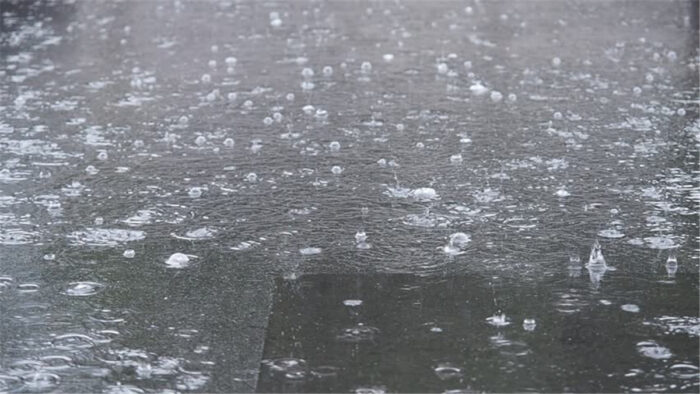
Freshly poured concrete can be adversely affected by heavy rain because the rain can wash out some cement from the mix, thereby making the concrete’s surface weak. This will decrease the concrete’s strength and make it a softer surface.
Working in the rain can cause cracks in the concrete or delay the time that the concrete cures. The good thing is that there are a number of precautions that the stamped concrete contractor can take to protect the concrete from being affected by the rain.
- First, the weather forecast should be checked before the concrete is poured and prepared accordingly, especially if the contractor is pouring independently. As a homeowner, you want a professional contractor to do the job. One of the questions you should ask is how they are prepared for the rain.
- Waterproof covers or tarpaulins can be used to cover the area that is to be poured. These should be kept on standby and applied as each section is to be left to cure.
- Any surface water should be pushed off the slab and entirely covered with a tarpaulin.
- Immediate action should be taken to cover the area if it rains straight after the concrete is poured.
To get the best out of your stamped concrete project in Kansas City, you want to get the best contractor on the job. It is important that you do adequate research on who you want to hire for your job. You may want to check out Angi’s List for the best concrete contractors in your area.
Conclusion
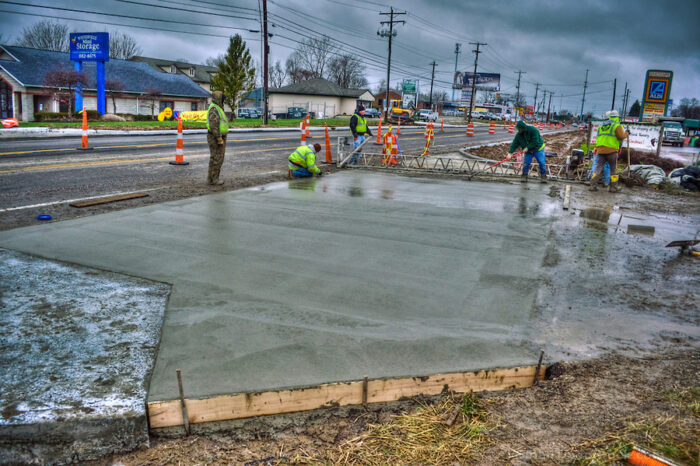
Stamped concrete contractors can overcome problems with working in cold weather in Kansas City by taking a couple of steps to ensure that the concrete maintains optimal temperature during the curing phases. To get the best out of stamped concrete in the Kansas City cold weather, the concrete contractor must ensure that the concrete doesn’t freeze, the highest temperature doesn’t reach maximal limits, and the concrete achieves the ideal strength.

